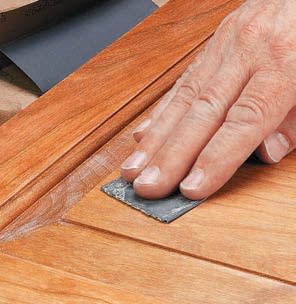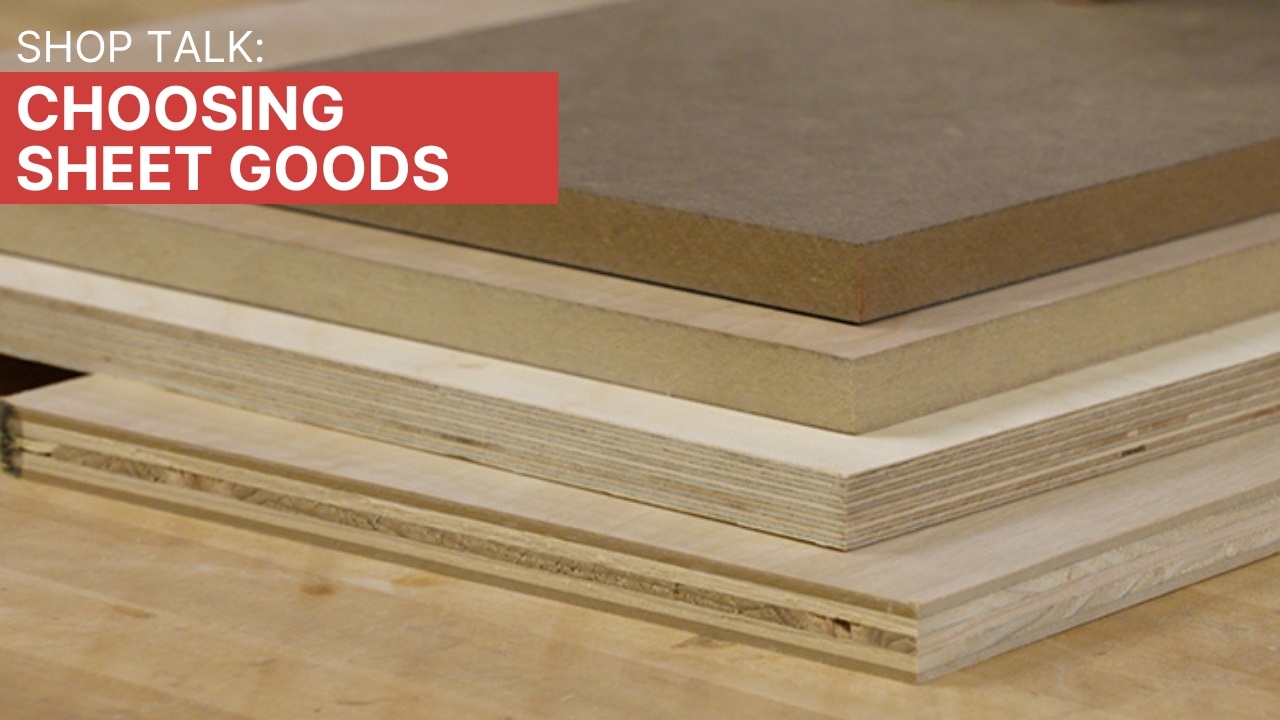
You’ve more than likely come across recipes for finishes that can be applied quickly and easily, offer guaranteed results, and look great. And there’s a good reason for the popularity of these simple techniques. Most woodworkers’ attitude toward finishing is a little less than enthusiastic — the phrase “necessary evil” comes to mind.
The catch is that a fast and foolproof finish may lack another important quality — the durability and protection a quality piece of woodworking deserves.
The good news is that you don’t have to compromise. After a bit of trial and error, I found an easy way to achieve this additional goal without sacrificing the guaranteed results and no-fuss application.

THREE PARTS.
The trick is a threepart, three-step process consisting of linseed oil, shellac, and fast-drying varnish. Each ingredient plays a particular role. A linseed oil “toner” imparts a warm color to the wood, the shellac quickly builds a smooth film, and the varnish adds durability and a high level of protection.
The clincher is the easy, no-fuss application. All three parts are simply wiped on in thin coats. Since the drying time is very short, there are no worries about runs, drips, or dust contamination. Your project can go into the finishing room on one day and come out looking great and ready for service the next.
A STEP-BY-STEP LOOK. Now that you’ve heard the short version, let me fill in the details. The How-To box on gives you a good look at how the process works. As I mentioned, you start by wiping on a very light coat of boiled linseed oil. I don’t flood the surface. Apply just enough to darken the wood and then wipe off any excess. Be sure to get into the corners and cover all the edges.
When applied sparingly, the linseed oil will simply cure under the following coats of shellac and varnish. I like the way it brings out a beautiful, warm color in most woods. The change is immediate and pretty dramatic.
SHELLAC. After allowing the linseed oil to dry for 30 minutes or so, next comes multiple coats of thinned shellac. The advantage to shellac is that it dries within minutes, allowing you to wipe on the coats in quick succession.

I use a 3-lb. cut shellac diluted one-to-one with denatured alcohol. This runny mix goes on easily and lays out smoothly.
If you plan to topcoat the shellac with a fast-drying polyurethane varnish, you’ll want to first test its compatibility with the shellac. The wax in shellac can sometimes cause drying or adhesion problems. An easy way to avoid this is to de-wax the shellac. Pour some into a jar and let it sit for several days. The wax will start to settle out and the pure shellac can then be poured off.
PADDING. The technique used to wipe on shellac (called padding) is easy to master. Take a soft, lint free cloth and fold over the edges to create a flat pad about 2" square. Dip the pad into the shellac until it’s saturated. Wipe it on as if you were brushing — with long strokes. Overlap each stroke until the surface is covered. The thin shellac will level well. Since you’re going to apply multiple coats, you don’t need to be too fussy.
Often, by the time you’ve completed one coat, you can start the next. Keep adding coats and you’ll begin to notice a glossy build. I don’t bother to sand between coats. You can wipe on about three coats and then give the shellac a chance to cure thoroughly (about one hour) before applying several more.
After this second round, take another break to let the shellac cure. An hour later you can sand lightly with 320-grit or finer sandpaper in preparation for the varnish topcoats.

FAST-DRYING VARNISH. Varnish can be formulated with different solvents to speed the drying time. This feature is further enhanced by thinning the varnish to “wiping” consistency. Depending on the brand you use, the recoat time can be reduced to as little as two hours.
I like to use a satin or semi-gloss varnish. You’ll end up with a more consistent sheen. Just pour the varnish into a jar and add an equal volume of mineral spirits.
The varnish topcoat is applied similarly to the shellac — with a bit more care. Use a soft pad to wipe on a light wet coat. If necessary, you can “work” the varnish for a few minutes to even out the coverage. Then simply let it sit.
You can stop here, or for more protection, you can add a second coat once the varnish has dried sufficiently. Just sand lightly and then repeat the process.
STEEL WOOL. I let the finish cure overnight and then buff the surface with #0000 steel wool (main photo). And for the modest amount of work, the results are pretty hard to beat.
How-To: Three Easy Steps to a Great Finish

An initial coat of boiled linseed oil adds warmth and depth of color to the wood. Apply it sparingly.

Next, I pad on multiple, thin coats of shellac in quick succession. This starts to build a smooth film.

A final layer of varnish adds more protection and durability. Wipe on a wet, even coat and let it dry.









